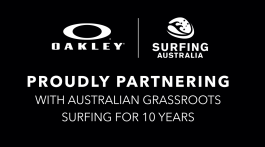In the first of a two part series we will explore the first phase of the tax planning process.
By Clinton Fraser
We are now in the middle of the final quarter of the financial year. An important time as we have fresh winter stock on the shelves and push for a strong finish to the year while trying to balance winter swells or a trip to Indo.
As we have focused during the first stage of the year on improving profits and cash flow (amongst other things), we now need to start making plans in relation to what is to be done prior to 30 June 2015.
If we are to achieve the most optimal taxation position and mitigate our tax commitments then this requires carefully thought planning and strategy development.
This first phase of the tax planning process involves the forecasts, tax projections and the tax timeline.
At the very least it is essential to understand our future tax timeline of what taxes are to be paid, when and by whom. This is critical to your personal and business cash flows and if unchecked can be a cause of significant financial distress.
The starting position is to understand the year to date performance and then forecast the remainder of the year to determine a year-end taxable income position. This may be for an individual, a single entity, a family group structure or a large corporate entity. The concepts and the importance are the same for all
When the estimated profit position is established we can forecast the flow of distributions and estimate expected tax positions across all tax entities including individuals. This is when the fun starts! Work closely with your accountant to consider what options are available to reduce, mitigate or defer tax commitments. Consider the tax impacts of various strategies and forecast a revised and improved tax position.
“Work closely with your accountant to consider what options are available to reduce, mitigate or defer tax commitments.”
Optimal year-end positions can only be achieved by implementing strategies PRIOR to 30 June 2015. After 30 June is too late. As such early tax planning and allowing time for implementation and execution is critical.
Of course many specific events during the year can have a taxation impact so these must also be clearly understood. Such events could include the disposal or purchase of a property, changes in trading conditions or structures, new business opportunities as well as planning for personal events such as retirement and building of superannuation.
Knowledge is power so a clear understanding of your estimated financial and taxation position is critical to maximising your after tax wealth position as well as managing your tax commitments and cash flows. It is the difference between the road trip down the coast and the boat trip in the Mentawais!
Next month we will explore more specifically some of the technical taxation components of the tax planning process. But don’t wait until then the time to act is now.
For a no obligation discussion please contact clintonf@davidsons.com.au
*Clinton Fraser is a keen surfer and accountant from Davidsons, business advisors and accountants. He has facilitated at SBIA Roundtables.






